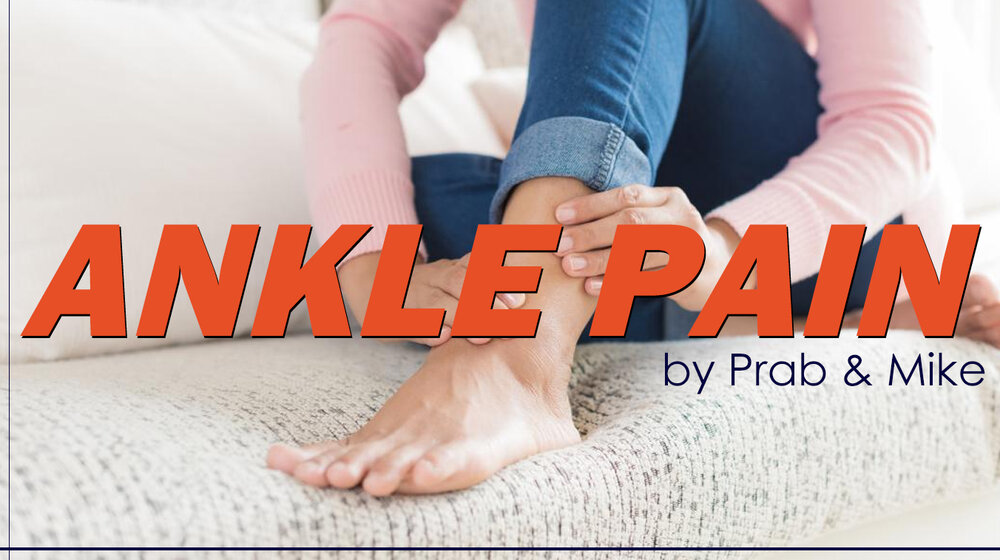Why Has My Ankle Suddenly Started Hurting?
As mentioned above, ankle pain can occur without the classical causes of ankle injuries.
However ankle pain can suddenly occur due to numerous factors other than arthritis. Injured tendons or nerves, tendinopathy, infection and stress fractures can be some of the reasons why sudden ankle pain may occur.
Further, if you have recently changed your footwear, wear high heels often, have flat feet or are heavily involved in sports with repetitive stress of your legs and ankle such as runners or hikers, it is common for sudden ankle pain to occur.
This is due to underlying wear & tear damages from over time that are aggravated with a change in footwear or level of activity.
If you have any of the symptoms mentioned above or difficulty walking, issues with your balance or any burning/tingling sensations, see a healthcare professional immediately.
Majority of the time ankle conditions are benign and easily resolvable and the earlier you see someone, the quicker the condition can get resolved!

What Is The Fastest Way To Relieve Ankle Pain?
There are numerous ways to quickly relieve ankle pain. The most common ways that have shown improvement in relieving ankle pain are taking non-steroidal anti-inflammatories and following the RICE principles; rest, ice, compression and elevation (Lin et al., 2010).
Additionally, gentle movement of the ankle has also shown benefits for reducing ankle pain.
Depending on the severity of the injury, seeing a healthcare professional might be necessary for further treatment. Seeing your local physiotherapist for your condition can be a great way to get it assessed, treated and reduce your pain.
For severe injuries such as fractures or avulsions braces and crutches might be required to reduce stress on the joint and prevent the worsening of the condition.
However, for the majority of ankle sprains or injuries, physiotherapy manual techniques such as gentle soft tissue massage, joint mobilizations and traction have been shown to reduce pain and improve movement (Van der Wees et al., 2006).
An exercise & stretching program provided by a physio can also help improve movement, function and pain (Hudson, 2009).

What Is Ankle Pain A Symptom Of?
The ankle joint, just like many other joints within the body, is made up of several structures. This includes bones, ligaments, tendons and neurovascular structures to name a few. All of which are at risk of injury or several types of arthritis.
Common injuries include stress fractures and osteoarthritis which affect the bony structures. The most notorious are ligament sprains such as injury to the lateral ligaments during a “rolling of the ankle” incident. Soft tissue structures such as the plantar fascia and the achilles tendon tend to be vulnerable to load mismanagement which can either result in inflammation or in rarer cases, a painful tear.
Check out this useful article by Mascaro and colleagues on common tendon overuse injuries and rehab progressions. Ensure advice is guided by a trained professional before implementing any of the rehabilitation strategies.

What Are The Signs Of Arthritis In Your Ankles?
As previously mentioned, arthritis can manifest itself in many forms. There are a variety of signs and symptoms you should look out for such as pain, swelling, loss of joint range of motion and pain when weight bearing.
Other signs to look out for is inflammation within the ankle or joints such as the big toe. You may experience this as a diffuse warmth especially after you rest, such as when sitting or sleeping.
If you satisfy any of the above signs or symptoms it would be best to highlight this with your general practitioner or allied health professional.

Why Does The Side Of My Ankle Hurt?
There are many injuries that can contribute to lateral ankle pain. Some of which include a tendinopathy, subluxation, osteochondral injury, ankle impingement, sinus tarsi or cuboid syndrome and bony stress injuries or fracture (Bae, 2020).
Lateral ankle ligament sprains are the most common type of ankle injuries. They account for 85% of all ankle sprains. The ATFL, short for the anterior tibiofibular ligament, is the most frequently injured as it is the weakest (Ferran and Maffuli, 2006).
Lateral ligament sprains usually occur from a combination movement of inversion, adduction and plantar flexion typically when there is a rapid shift over an individual’s centre of mass over a landing or weight bearing foot.
If not addressed properly, lateral ligament sprains can become recurrent issues especially within the sporting population. Basketball players have the highest incidence, with a recurrence rate greater than 70% (Yeung et al, 1994).
Therefore, it is important to treat ankle injuries immediately to reduce damage, prevent recurrences and return to the sport or activity you love.
#MakingHealthySimple
Prab & Mike

